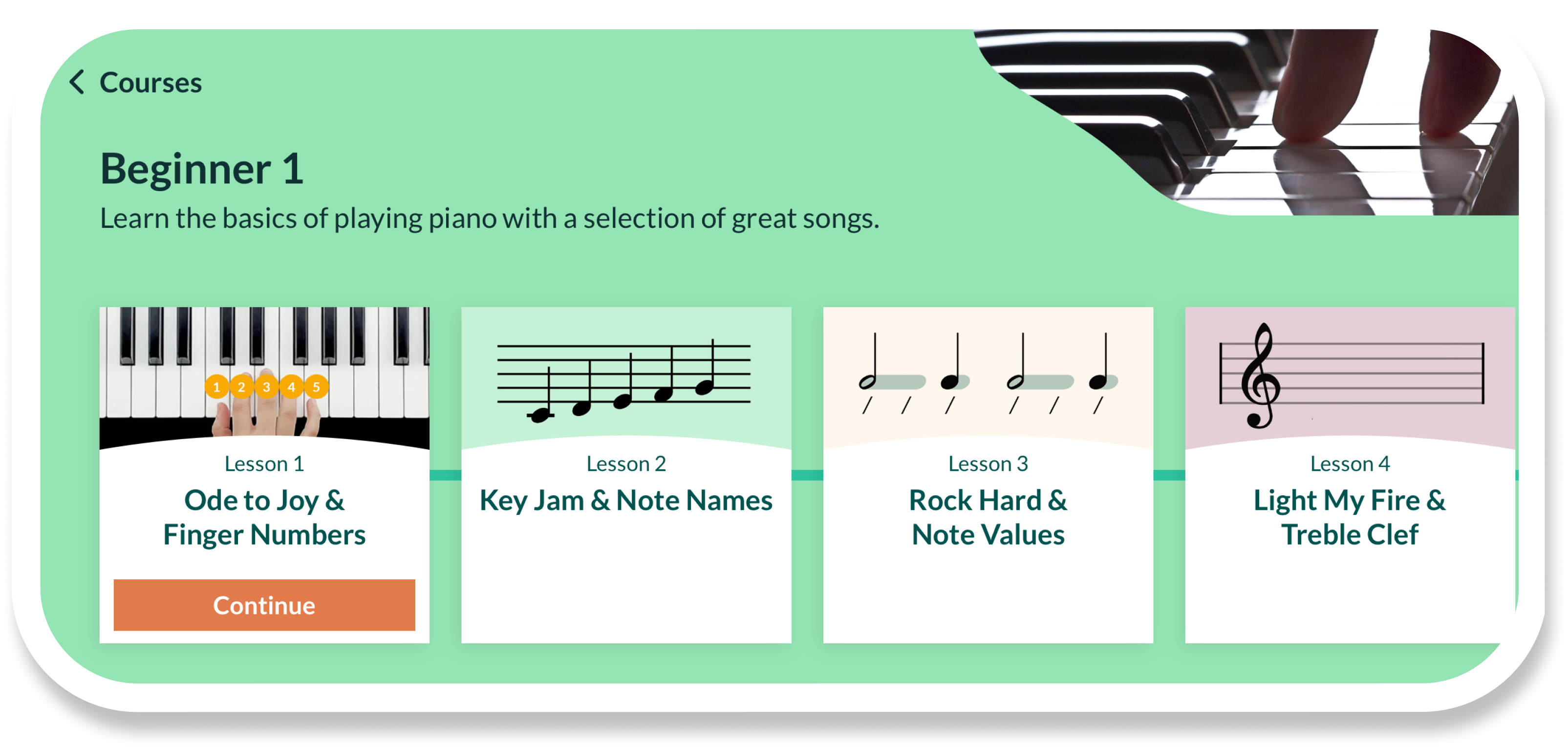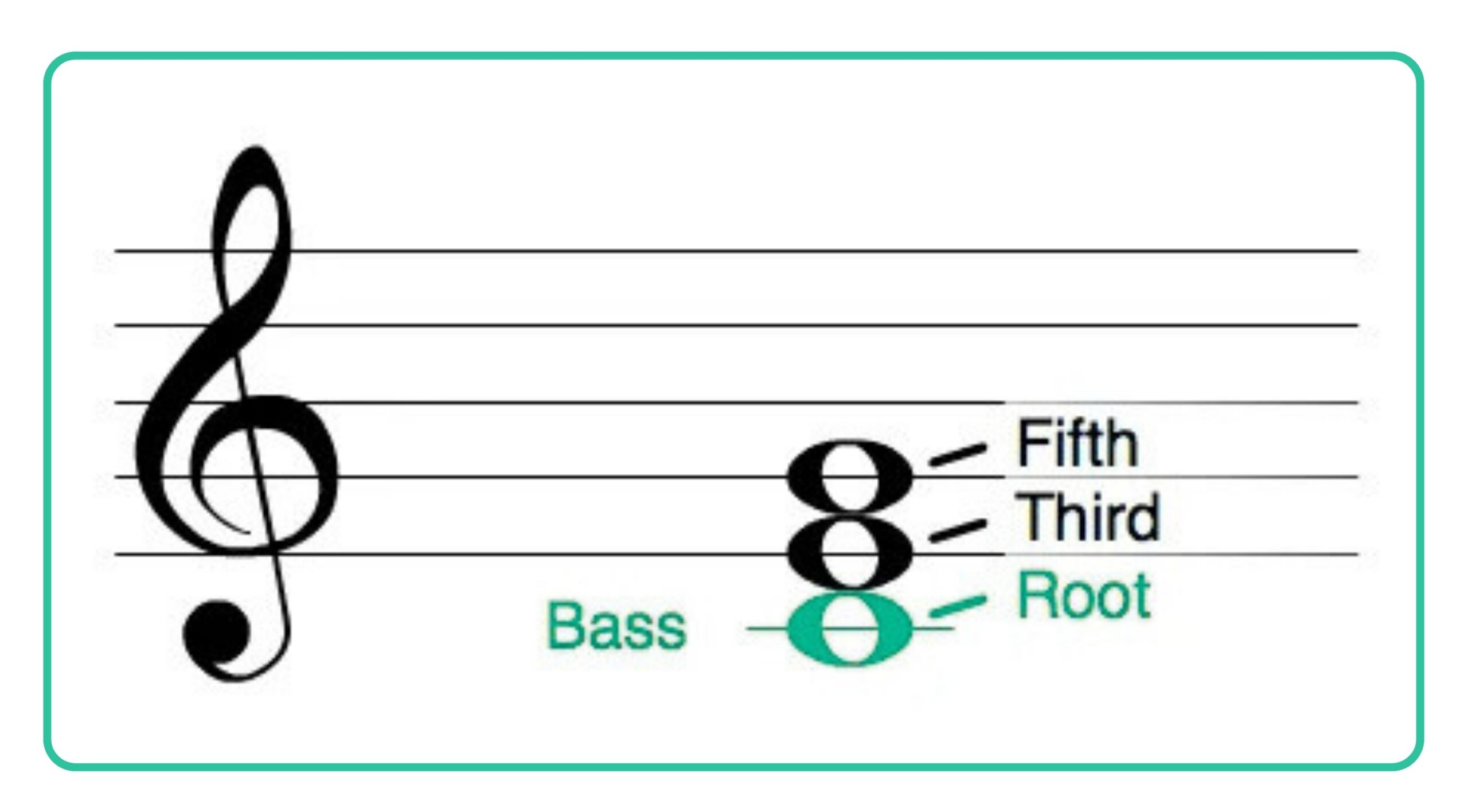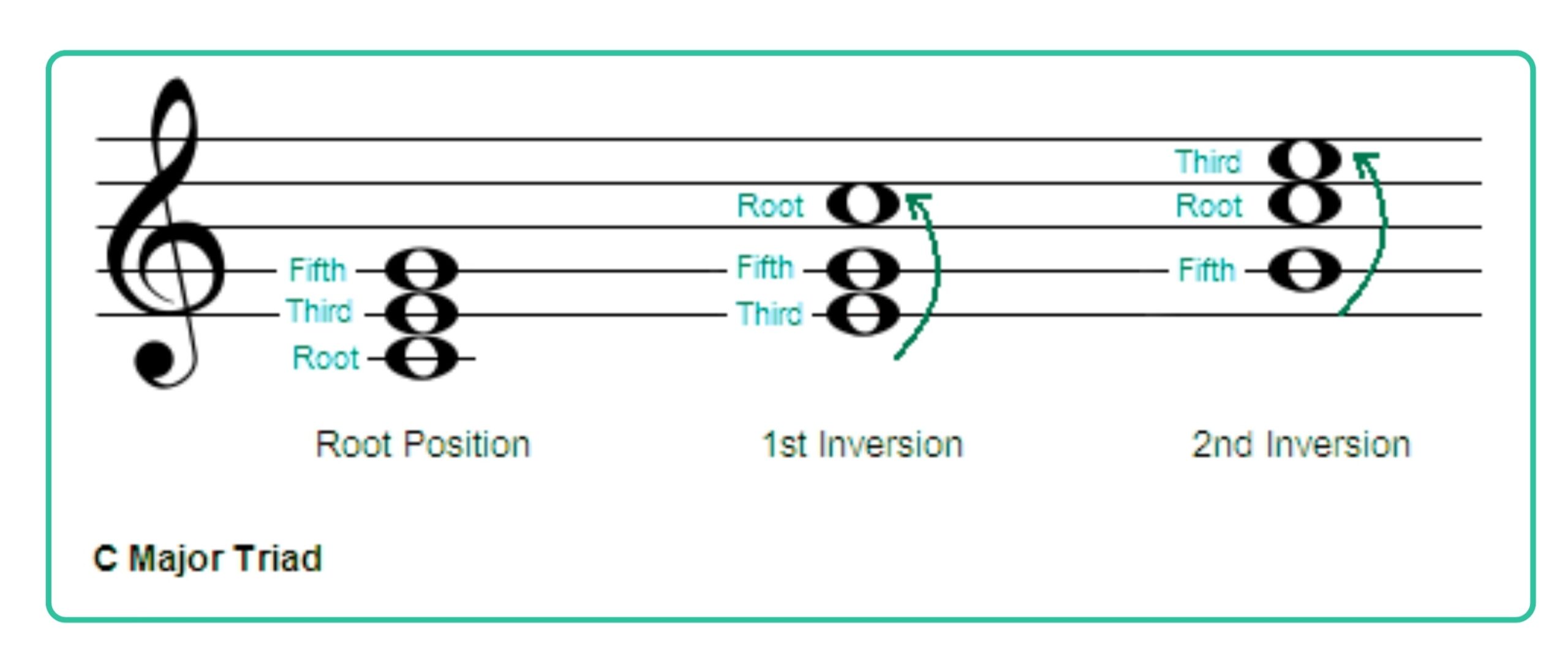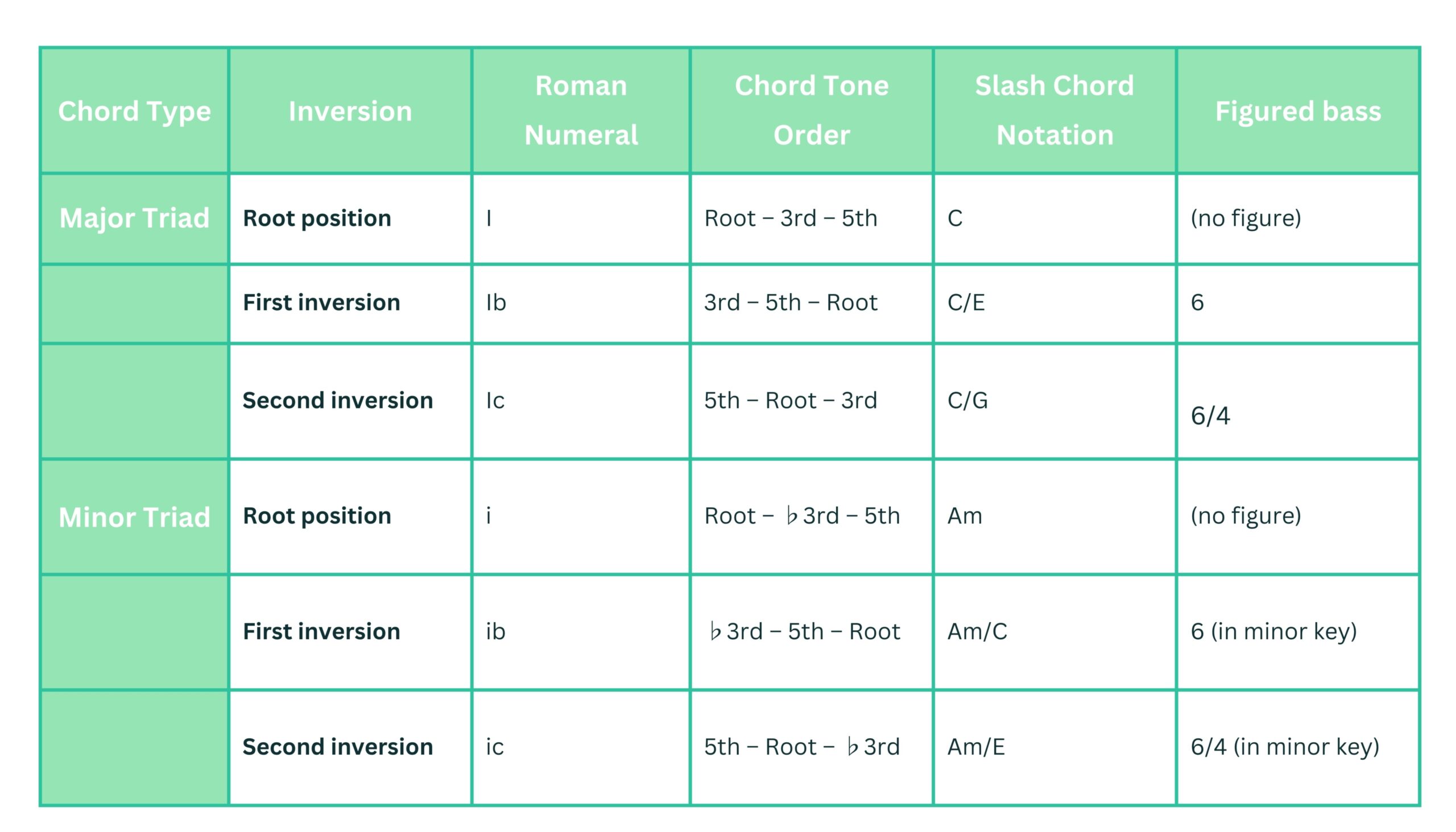Musicians use chords to express emotion and narrative, chord inversions give you more options on how to play a chord. This variation is achieved with subtle changes to harmonic movement and feeling by stacking the chord tones in different orders. Through this article, Skoove will help you explore how piano chord inversions work as well as how to incorporate them into your playing and practice routine. Understanding how chord inversions work will open entire new chord sonorities for you to explore. Let’s get to it.

What are chord inversions?
A chord inversion is when you take a chord and reorder the way notes are stacked to create different harmony and chord voicings. Before we get deeper into the theory behind piano inversions, let’s take a quick review of some basic piano chords. In this article we will focus on the inversions of three note chords known as triads.
In a triad, we have:
- The fifth: top note
- The Third: middle note (the distinguisher for major or minor)
- The root: bottom note

A root note is where chords and scales get their name from. For example, a C major triad has the root note C. The third is what determines if the chord is a major or minor chord.
For example, if the root note is C and the middle note is E, then the chord will be C major:

The fifth rounds out the sound of a triad and adds a more solid structure to the chord. Triads with the root note as the lowest pitch are known as root position triads. By using inversions we can change the stacked order of the notes in any chord.
Types of chord inversion
With triads, there are two types of inversions other than root position.
First inversion
To create a 1st inversion triad, we put the root note up one octave. For example, in a C major chord, this changes the order of the tones from C – E – G to E – G – C. In a 1st inversion chord, the third is the lowest note.

Second inversion
To create a 2nd inversion triad, we put the third up one octave in a 1st inversion, or both the root and third if you start from root position.
In a C major chord, this changes the order of the tones from E – G – C (1st inversion) to G – C – E (second inversion). In a 2nd inversion chord, the fifth is the lowest note.

Take a look how this C major chord has changed throughout its inversions.

How to notate triad chord inversions?
Understanding how to write chord inversions is essential to playing and reading them accurately. Most frequently in pop music charts chord inversions are written using slash notation. Be careful as slash notations do not always mean you are playing a chord inversion. They just dictate the note in the bass.
You will also come across Roman numerals with the letters b and c for used first and second inversions or figured bass which uses Arabic numerals to show the intervals from a provided bass note.

Check out this Skoove lesson to see some slash chords and inversions in action.
Intervals of the inversions
Chord inversions change the interval structure of the chord. In the root position C major chord, we find the standard interval structure of a major third followed by a minor third. This structure is altered when we move notes to create inversions. Have a look at this handy chord inversions piano chart that shows the interval structure of major and minor triads. Try and play them to help you get to grips with all the sounds available with chord inversion.
Major chord inversions

Minor chord inversions

How to play practice chord inversions?
To get used to playing and practicing inversion try and play through these examples. These exercises help to show how chord inversions in an F major V – I cadence can affect the movement between chords known as voice leading.
Here is a C major chord moving to an F major chord first with both chords played in root position.

Notice how all of the notes in the C major chord jump up by a perfect fourth? This large leap doesn’t feel smooth. If we make use of inversions, we can create more satisfying movement and voice leading.
To put this idea into practice start with another root position C major chord, then move to a 2nd inversion F major chord. This inversion of the F major makes use of the C as a common tone between the chords maintaining C as the lowest note.

This creates a more deliberate voice leading through these chords.
Now let’s try a 1st inversion C major chord moving to a root position F major chord. This maintains the common tone C at the top of the chord, with the lowest note changing from E to F and G to A.
This movement of the bass note up a half step creates a more deliberate resolution to the F major chord through considered use of a leading tone.

When to use chord inversions?
Chord inversions are found all over music and are used in many different settings and contexts. As we have seen, chord inversions can help to make chord progressions sound more smooth and connected.
With a vast selection of songs along with guidance and feedback, Skoove is the perfect place to get you playing chord inversions. To put this theory into practice you can play these pop classics with the Skoove app.
Learning how to use chord inversions will make your playing more interesting and open up more harmonic possibilities. Chord inversion allows us to use voice leading and link chords together in a more considered way. You can have fun and experiment with chord inversions in just about any progression.
Skoove has a wide variety of lessons to help you with chords and chord progressions. With repertoire ranging from classical to pop and everything in between, you will definitely find something to have fun playing. Well done and happy practicing!
Author of this blog post:
Matthew Dickman

With over a decade of experience in music education Matthew holds a BA in Music from Paul McCartney’s LIPA and an MA in Composition from the University of Salford. Mathew has developed a distinctive compositional voice and approach to music theory education through his research and work in the music industry. Matthew’s writing for Skoove combines experience from orchestral and media composition, and as a gigging jazz musician, to create a wholistic and accessible pedagogy for musicians of any level. Away from music, he enjoys reading and exploring nature to expand his horizons and knowledge contributing to his holistic teaching style.














